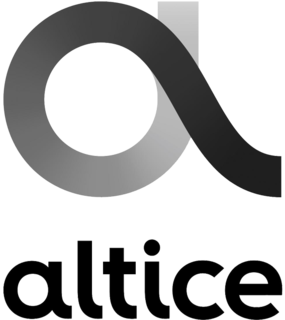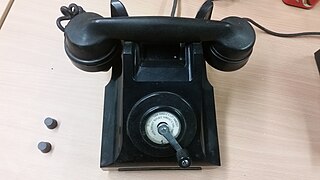
Communication in Australia through electronic means using devices such as telephone, television, radio or computer, and services such as the telephony and broadband networks have always been important in Australia given the 'tyranny of distance' with a dispersed population. Governments have driven telecommunication development and have a key role in regulation.

Spark New Zealand Limited is a New Zealand telecommunications company providing fixed line telephone services, a mobile network, an internet service provider, and a major ICT provider to NZ businesses. It has operated as a publicly traded company since 1990.

Telstra Tower is a telecommunications tower and lookout that is situated above the summit of Black Mountain in Australia's capital city of Canberra. It is named after Australia's largest telecommunications company, Telstra Corporation. Rising 195.2 metres (640 ft) above the mountain summit, it is a landmark in Canberra and offers panoramic views of the city and its surrounding countryside from an indoor observation deck and two outdoor viewing platforms.

Mercury Communications was a national telephone company in the United Kingdom, formed in 1981 as a subsidiary of Cable & Wireless, to challenge the then-monopoly of British Telecom (BT). Mercury was the first competitor to BT, and although it proved only moderately successful at challenging their dominance, it was to set the path for new communication companies to attempt the same.

Globe Telecom, commonly shortened as Globe, is a major provider of telecommunications services in the Philippines. It operates one of the largest mobile, fixed line, and broadband networks in the country. Globe Telecom's mobile subscriber base reached 60.7 million as of end-December 2017, down 3% from the 62.8 million subscribers reported a year ago.
Vodafone New Zealand is a telecommunications company operating in New Zealand; it is a subsidiary of the London-listed company Vodafone Plc. It is New Zealand's largest mobile phone operator, based in Auckland, and was formed in 1998, after Vodafone purchased BellSouth's New Zealand operations. The company employs over 3,000 people and has operations nationwide, with its main offices based in Auckland, Wellington and Christchurch. The company is part of New Zealand Telecommunications Forum.
Zygmunt Edward "Ziggy" Switkowski,, is a Polish Australian business executive and nuclear physicist. His most public role was as the chief executive officer of Australia's largest telecommunications company Telstra from 1999 to 2004. During his tenure, he oversaw the privatisation of the then government-owned corporation through a series of public tranche sales. Currently, he is the chairman of both NBN Co and Suncorp, a director of Healthscope, Oil Search and Tabcorp and the Chancellor of the Royal Melbourne Institute of Technology.

TelstraClear Limited was New Zealand's third-largest telecommunications company before being acquired by Vodafone New Zealand in October 2012.

The Overseas Telecommunications Commission (OTC) was established by Australia in August 1946. It inherited facilities and resources from Amalgamated Wireless Australasia Limited (AWA) and Cable & Wireless, and was charged with responsibility for all international telecommunications services into, through and out of Australia. In effect, all overseas telecommunications was nationalized. Australia was adopting a Commonwealth-wide policy that had been adopted the Commonwealth conference in 1945. The main goal was to end the artificial routing of traffic to cable or wireless depending on private financial profits.

Clear Communications was a telecommunications company based in New Zealand. Until merging into Telstra's operations in 2001, it was the biggest rival to Telecom New Zealand.

Altice Portugal is the largest telecommunications service provider in Portugal. Since June 2, 2015, the company is a wholly owned subsidiary of Altice Group, a multinational cable and telecommunications company with a presence in France, Israel, Belgium & Luxembourg, Portugal, French West Indies/Indian Ocean Area and Dominican Republic, Switzerland, and the United States. Its assets in Portugal were sold to Altice in 2015 in a move of its owner, Oi SA, to reduce debt. The African assets were mostly sold for the same reason. Portugal Telecom, SGPS SA was split in separate companies: PT Portugal and Pharol, which owns a 27,5% stake in Oi.

AWA Ltd, formerly Amalgamated Wireless (Australasia) Ltd, is an electronics manufacturer and broadcaster based out of Sydney, Australia. Throughout most of the 20th century AWA was Australia's largest and most prominent electronics organisation, undertaking development, manufacture and distribution of radio, telecommunications, television and audio equipment as well as broadcasting services.

The Victorian Telecommunications Museum is a small museum in the Hawthorn Telephone Exchange, Burwood Road, Hawthorn, Victoria, Australia. It houses historical telecommunications equipment that had been used by what originally was called the Postmaster-General's Department. The Department split in 1975 into Telecom Australia and Australia Post. In 1993 Telecom Australia was renamed Telstra after the merger of Telecom Australia and OTC.
The Overseas Telecommunications Veterans Association was founded in Sydney, Australia in 1956 by long-serving employees and ex-employees of Amalgamated Wireless Australasia Limited (AWA), Cable & Wireless and Australia's then international telecommunications carrier, the Overseas Telecommunications Commission (OTC), which had itself been established a decade earlier by combining the international radio and cable assets of AWA and C&W respectively.

Pacnet was a global telecommunications service provider between 2008 and 2015. It was formed from the operational merger of Asia Netcom and Pacific Internet on 8 January 2008. It was owned by a private investor group comprising Ashmore Investment Management Limited, Spinnaker Capital Limited and Clearwater Capital Partners. Its acquisition by the Australian telecommunications company Telstra was announced at the end of 2014, and completed in April 2015.
Vodafone Australia or Vodafone Hutchison Australia (VHA) is a mobile telecommunications company and Internet service provider that operates the Vodafone brand in Australia. The result of a 2009 merger between Vodafone Australia and Hutchison 3G Australia, it is Australia's third-largest mobile carrier with approximately 5.8 million subscribers, A$3.5 billion in annual revenue and a 19 per cent market share making it Australia's third largest mobile telecommunications provider behind Telstra and Optus. It also offers fixed-line and wire broadband services via the National Broadband Network.

Telstra Corporation Limited v The Commonwealth was an important case decided in the High Court of Australia on 6 March 2008.
In Australia, the Postal and Telecommunications Department was an Australian Government department, established in 1975 to take over the residual functions of the Postmaster-General's Department after its postal and telecommunications functions were split into the Australian Postal Commission and the Australian Telecommunications Commission respectively. The Department was abolished in November 1980.














